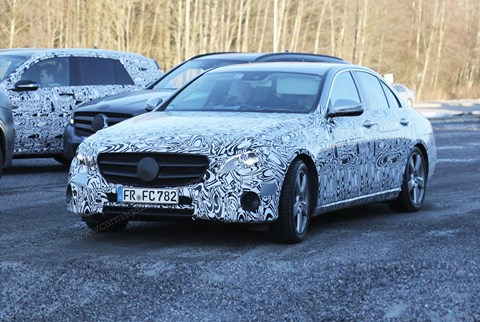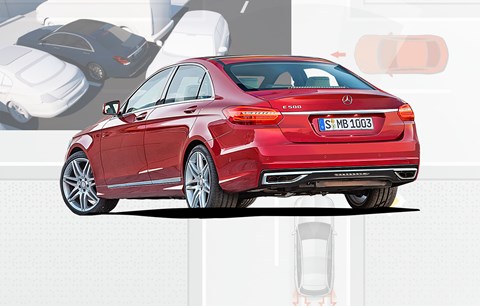
► Nine tech innovations on new E-class
► See the new E late in 2015, on sale in 2016
► The most semi-autonomous exec yet?
The new 2016 Mercedes-Benz E-class won’t look like a revolutionary, as depicted in our artist’s impression above, but under the skin it’s crammed with innovations that will shape the make-up of all cars for the next generation. Here’s the tech that’ll make it the most autonomous car we’ve yet seen.
1) Automatic parking by remote control
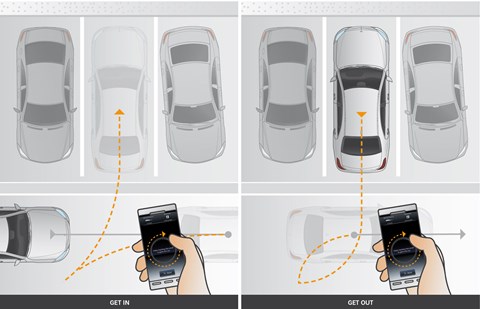
Intelligent auto parking has been around for over a decade, but the next E-class will let you park the car from the outside via your smartphone. Drive past a space (either parallel or perpendicular) and if the car detects it’s big enough you can jump out, active the smartphone app and then scroll a wheel that looks like a digital version of an early iPod’s, to get the car moving. You’re not controlling the direction of the car, just the progress of the manoeuvre. Stop scrolling and the car stops too.
2) Death of the (salesman’s) car key
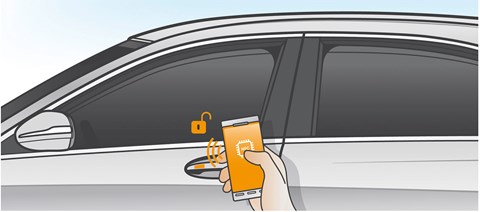
Mercedes pioneered the smart cards and cartridge keys that have replaced the old metal versions (albeit, only this year, in the case of Ferrari), but now it’s getting rid of them altogether. Instead, a virtual key stored on your smartphone’s secure chip takes its place. You can pass the keys on to another phone to let a friend drive, and it will still work if your phone’s battery is flat. The bad news is that you have to physically touch the phone to the door handle and it won’t work with iPhones.
3) Genius IQ 84-LED lamps are better than laser lights
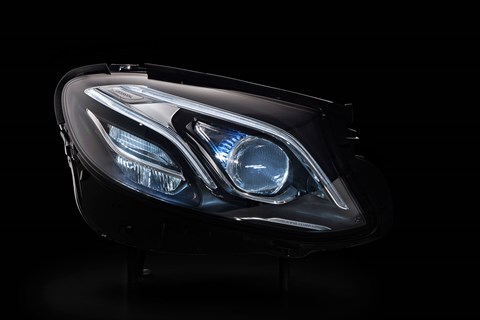
Last-year’s facelifted CLS got 24-LED lamps; now the E-class turbos the count to 84. More LEDs means more precise metering of the light, ideal for picking out, or not picking out, sections of the road and vehicles using it. The car will even change the light pattern in rain to avoid dazzling other drivers with reflections from the road surface, and the rear brake lights will dim at night, making being stuck behind an automatic-equipped E in a night-time jam less of a headache. Interestingly, Mercedes engineers say rivals’ crowing about laser lighting is pure marketing gimmick. They say the laser has to be converted to normal light before being sent to the road, and only gives an advantage on straight road with no traffic ahead by giving extra visibility beyond 450m. Merc says its LED lamps are far more effective in all situations below 450m making them more useful overall.
4) Inter-car communication helps you ‘see’ around corners
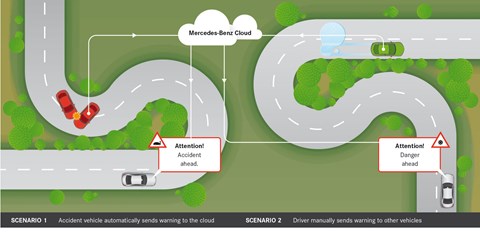
Car-to-car comms is one of the ideas that will revolutionise the car in the coming years and help smooth the shift to autonomous driving. Although Mercedes is working towards this goal with other car makers, including Audi, it’s not there yet. Instead, what the E-class gets is Car-to-X, a radio (rather then LAN-) based system that receives information from the cloud about incidents up ahead. If you come across an accident, or are involved in one, the Comand system gives you an option to report it. No new hardware is involved, so it’ll be standard equipment and the service is free for the first three years. In theory, other makes of car could opt in, but the reality is that you’re only likely to get Benz info. Perfect if you live in Stuttgart.
5) Collision avoidance now with steering assistance
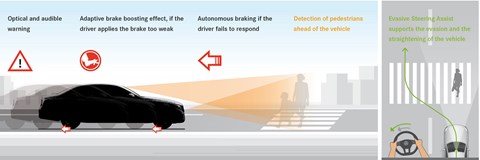
Most car makers now offer some kind of collision warning system, and many will even brake at the last minute. But the E’s goes one further by helping you steer around your impending doom. Crucially though, you have to have made some steering input yourself – the car merely judges whether you’ve done enough to clear the obstacle. Why not fully automatic? Because the system can’t tell whether the space you’re moving to isn’t about to contain an HGV coming the other way and it needs you to make that call first.
6) Pedestrian and cross-traffic detection in towns
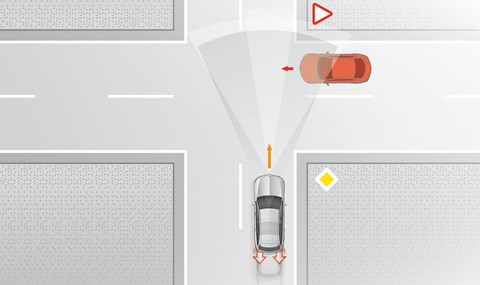
Extending that collision avoidance function, the E-class can sense when a pedestrian walks into the road, or when a car runs though a red light across your bows at a crossroads, and brake automatically if you fail to respond to a shrill warning beep.
7) Auto braking when reversing blind onto busy roads
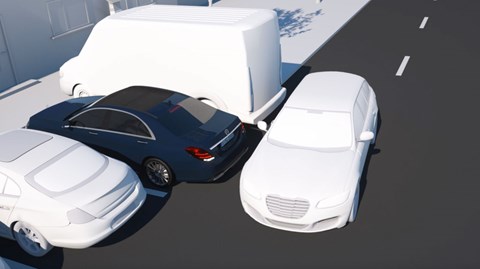
You know the situation. You need to reverse out of a space onto a road but you can’t see because there’s a humungous SUV or van parked next to you blocking the view. In the new E-class you could use the remote parking app, but if you want to do it the old-fashioned way from the driver’s seat, the car scans the road from below the bumper line of surrounding cars, and will apply the brakes to prevent you T-boning another car.
8) Intelligent Drive takes another step towards autonomy
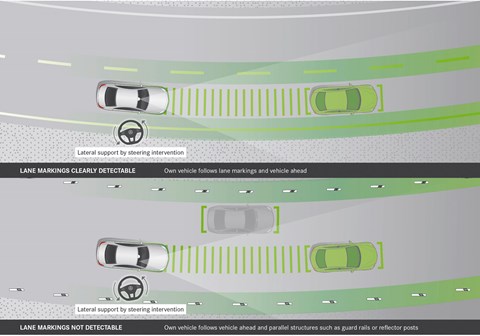
Provided you make the occasional steering input, a modern S-class will happily drive along at moderate speeds, automatically modulating its speed and trajectory to keep a safe distance from the car ahead, and within the white lines. Now the system works at much higher speeds of up to 200kmh (124mph), while below 130kmh (80mph) it doesn’t even need white lines.
9) Automatic-speed limit recognition – and adherence…
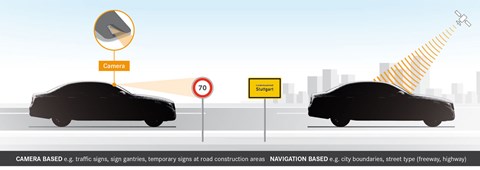
Here’s the scary one for libertarians. Speed limit recognition is nothing new, but acting on those limits is. Acting on road-sign information gleaned from the camera, or from information in the nav, the E-class can automatically slow you as you enter an urban area, and then accelerate you back up to speed when you leave. Optional, of course. For now.
